
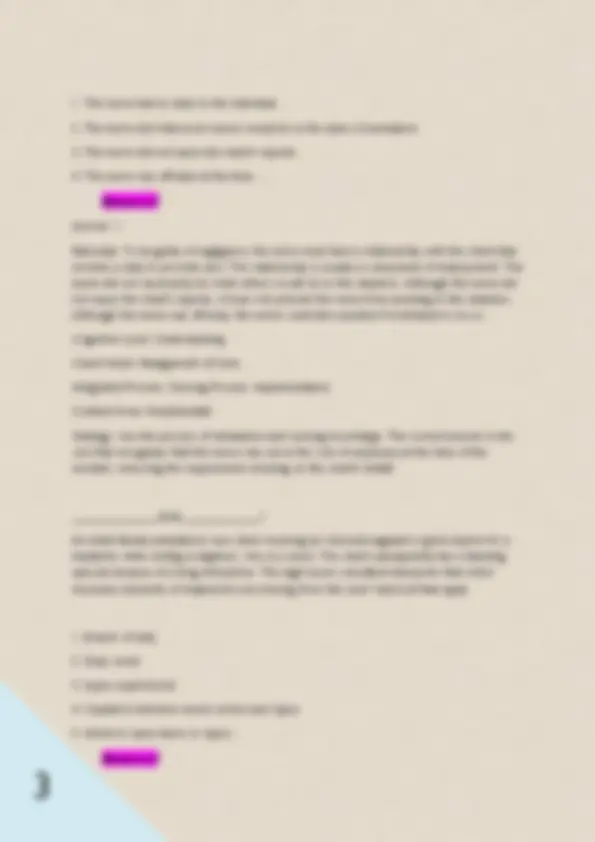
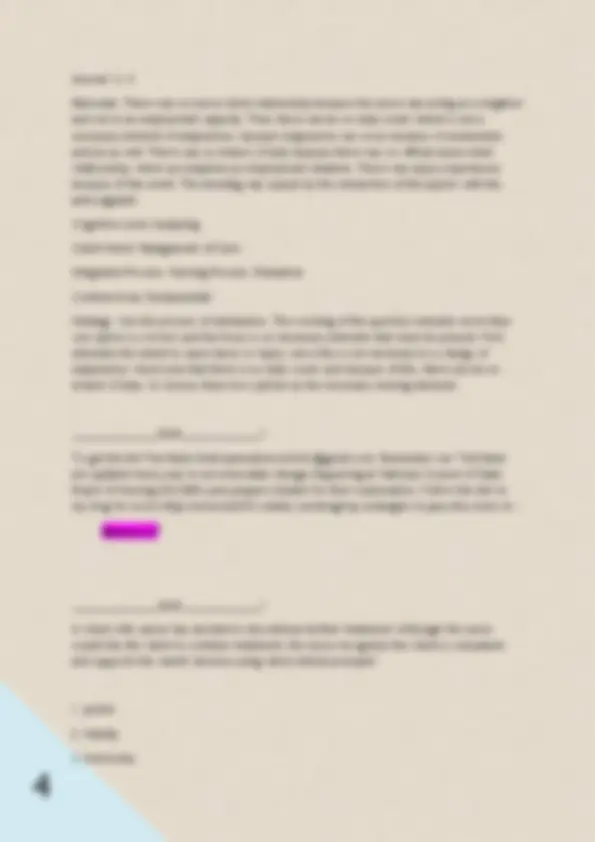
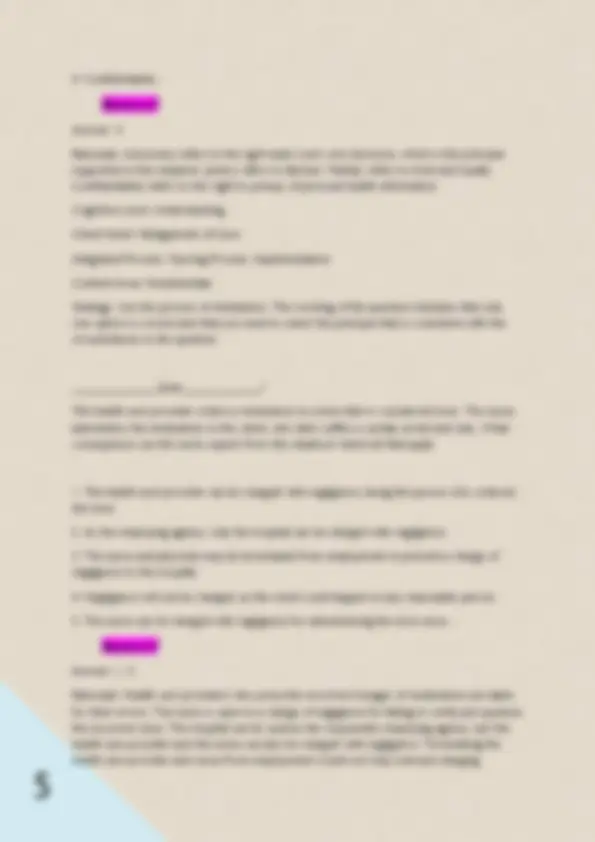
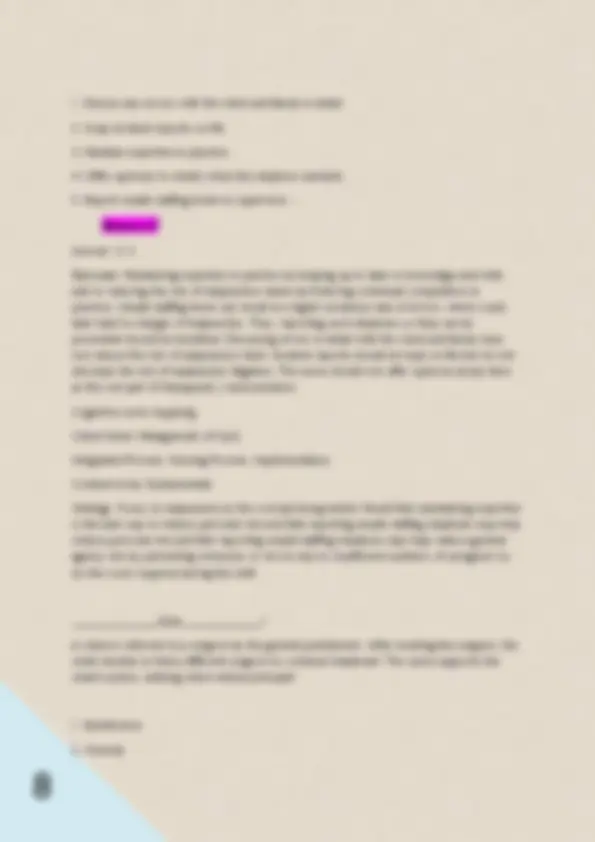
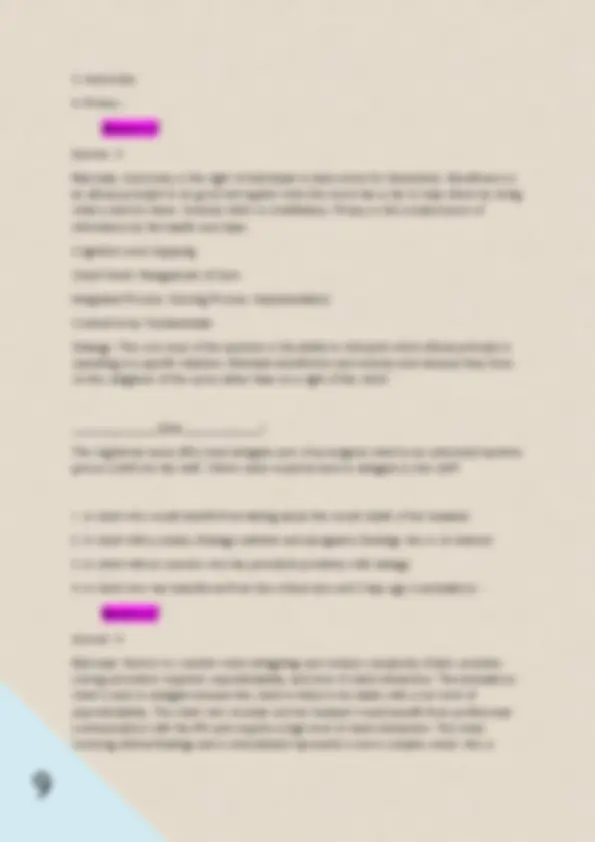
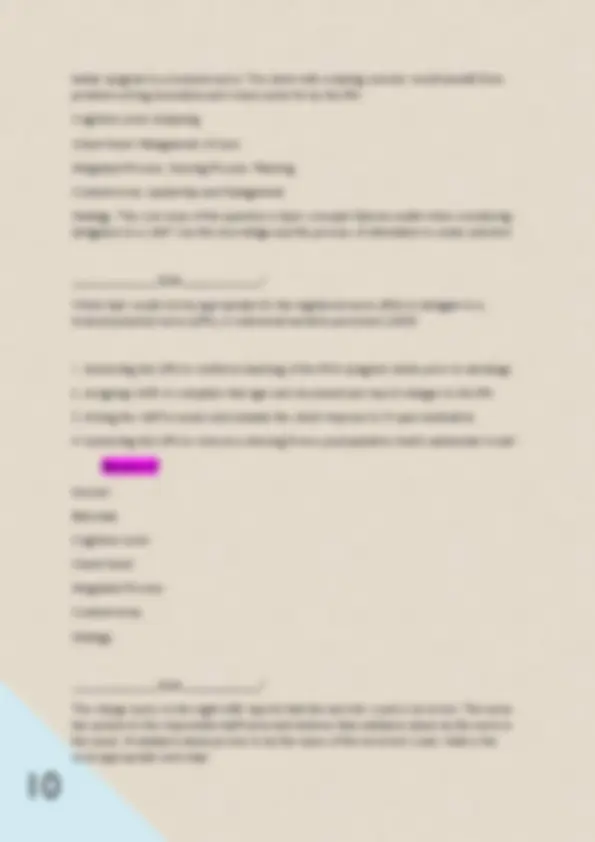
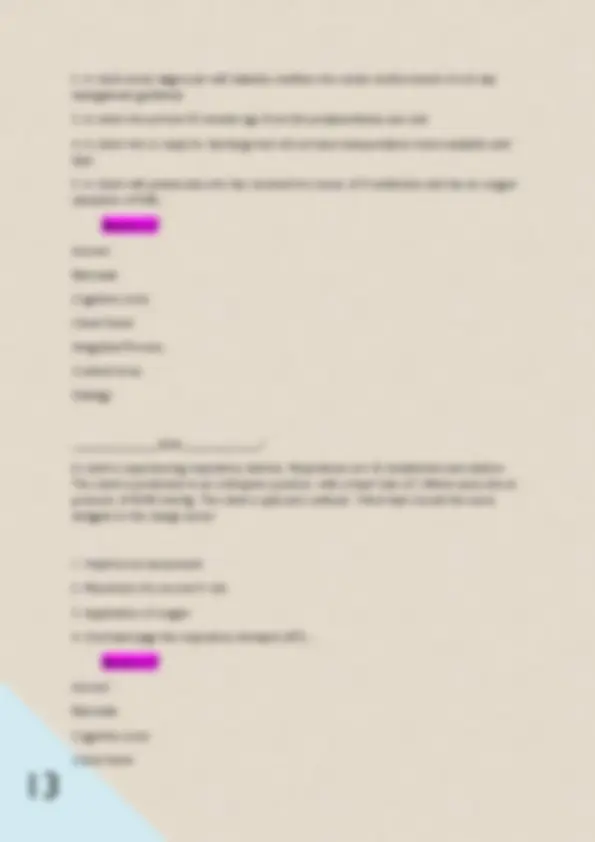
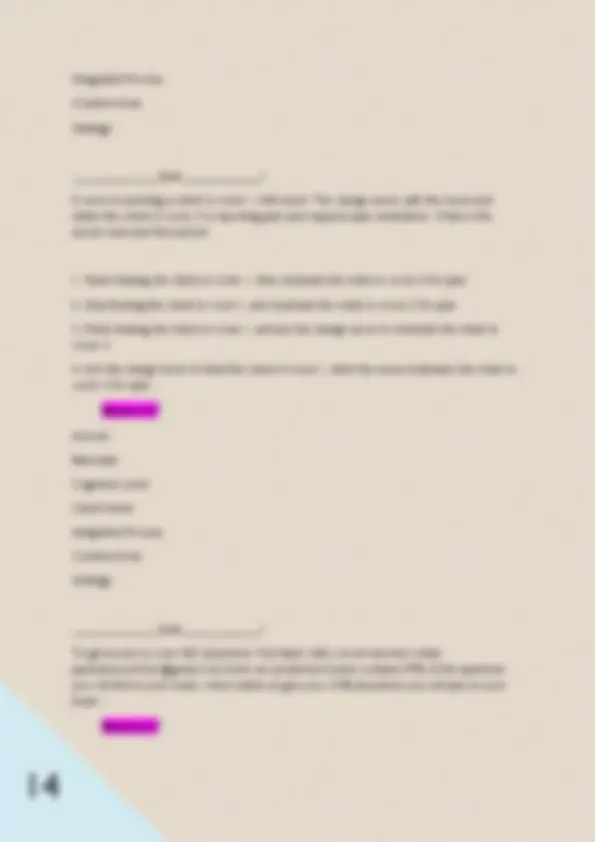
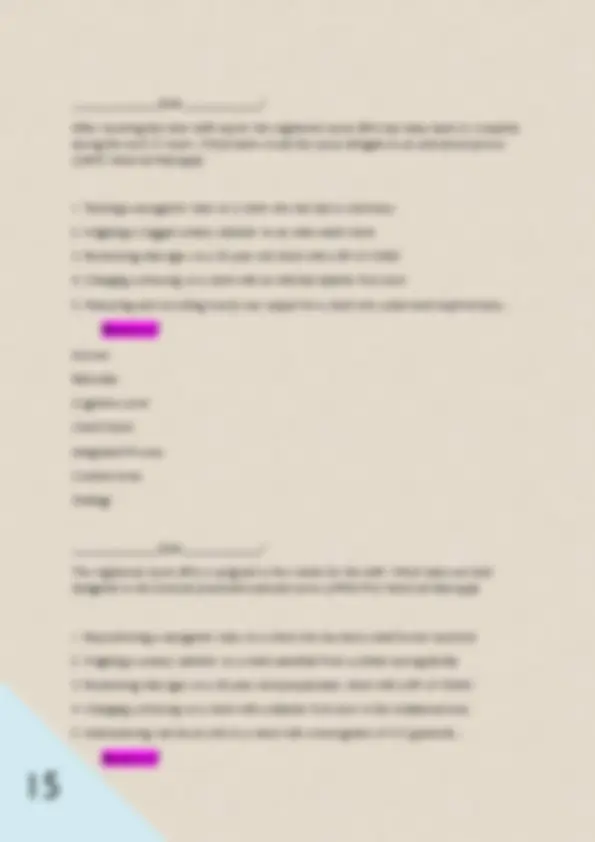
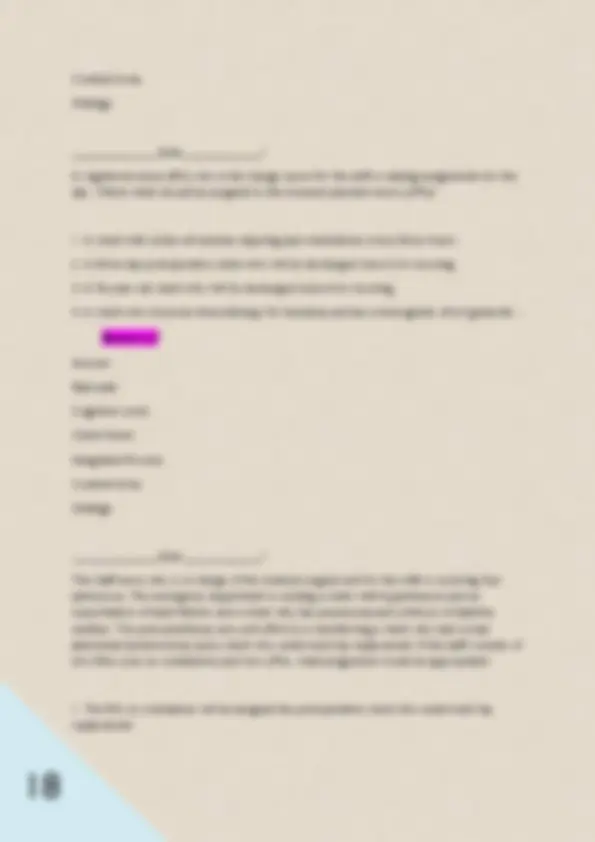
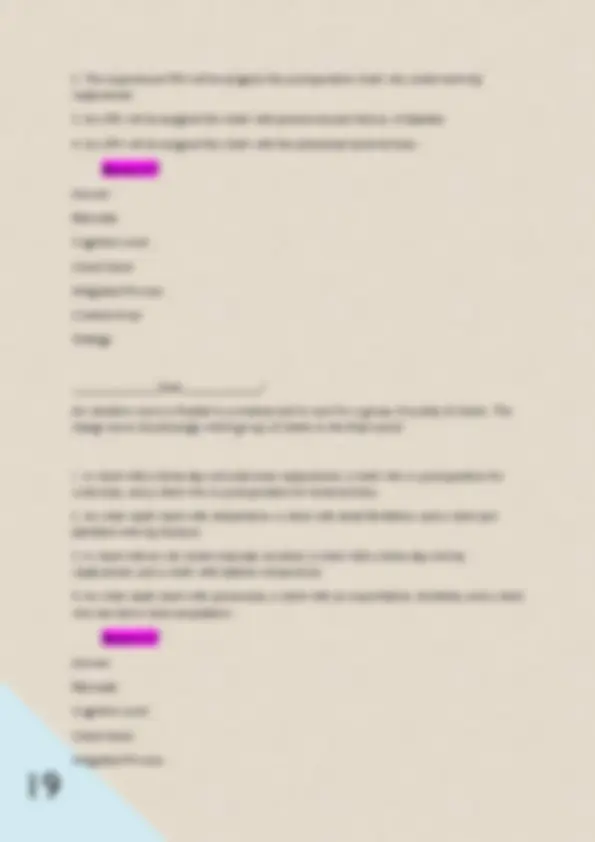
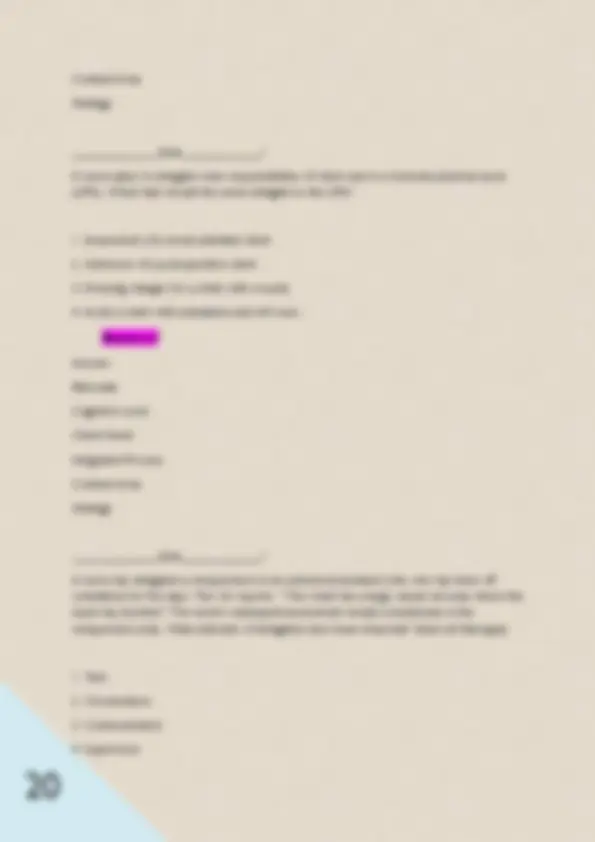
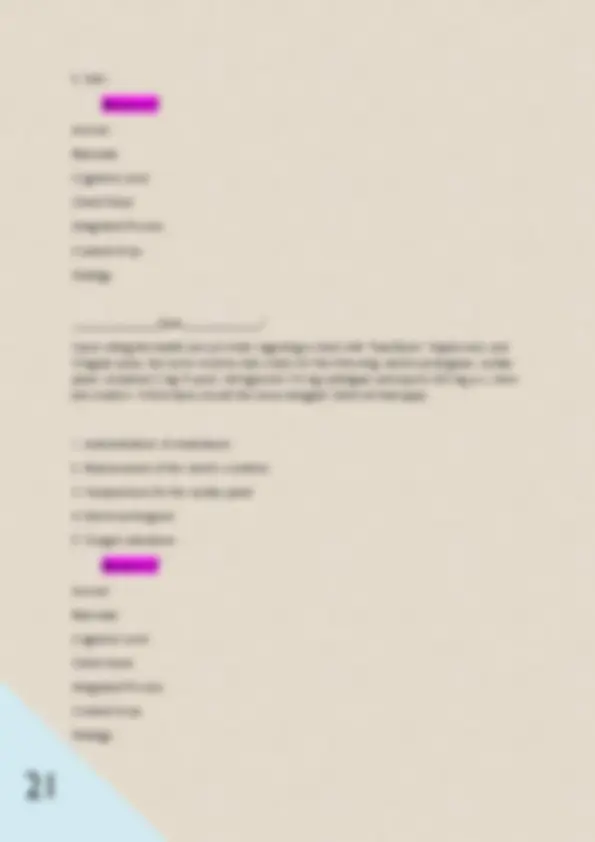
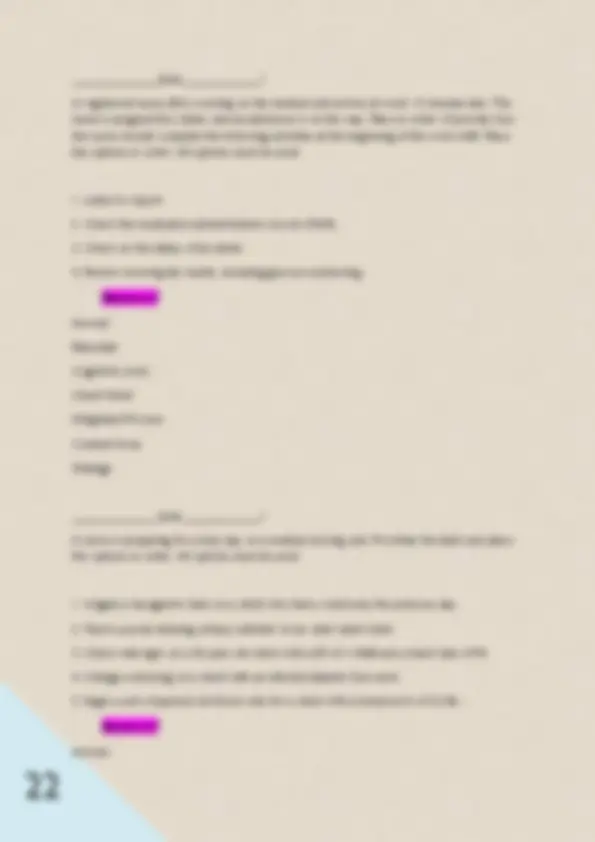
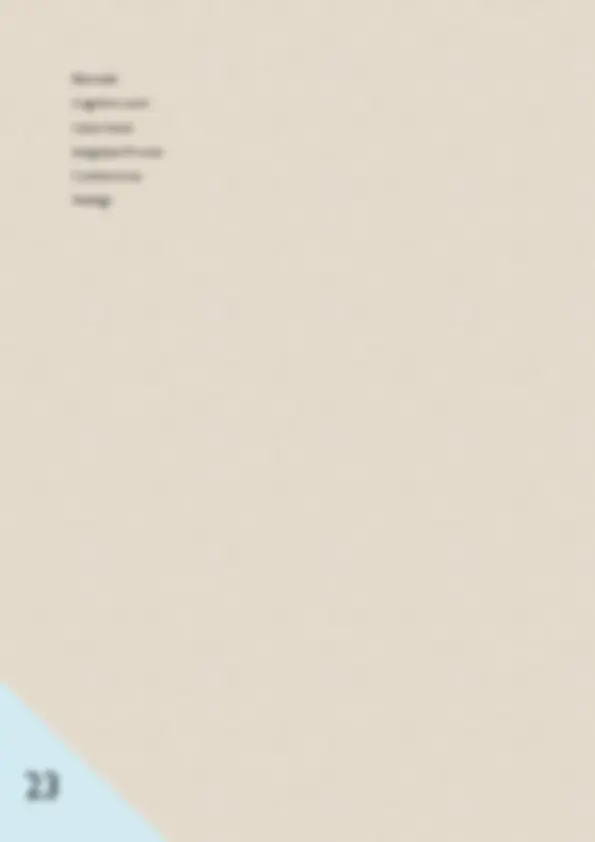


Study with the several resources on Docsity

Earn points by helping other students or get them with a premium plan


Prepare for your exams
Study with the several resources on Docsity

Earn points to download
Earn points by helping other students or get them with a premium plan
Community
Ask the community for help and clear up your study doubts
Discover the best universities in your country according to Docsity users
Free resources
Download our free guides on studying techniques, anxiety management strategies, and thesis advice from Docsity tutors
NCLEX-RN Practice Questions For 2025-2026 Test Review / Q-Bank / Complete Accurate Quizzes with Verified Answers. _____________Quiz____________? A nurse forgets to administer a client's diuretic and the client experiences an episode of pulmonary edema. The charge nurse would consider the medication error to constitute negligence because the situation contains which element? 1. Purposeful failure to perform a health care procedure 2. Unintentional failure to perform a health care procedure 3. Act of substituting a different medication for the one ordered 4. Failure to follow a direct order by a physician - Answer✓✓ Answer: 2 Rationale: Negligence is the unintentional failure of an individual to perform or not perform an act that a reasonable person would or would not do in the same or similar circumstances. A purposeful failure to perform a procedure would be the opposite of negligence, which is unintentional. Substituting a different medication does not fit the description
Typology: Exams
1 / 23

This page cannot be seen from the preview
Don't miss anything!
















_____________Quiz____________? A nurse forgets to administer a client's diuretic and the client experiences an episode of pulmonary edema. The charge nurse would consider the medication error to constitute negligence because the situation contains which element?
Answer: 2 Rationale: Negligence is the unintentional failure of an individual to perform or not perform an act that a reasonable person would or would not do in the same or similar circumstances. A purposeful failure to perform a procedure would be the opposite of negligence, which is unintentional. Substituting a different medication does not fit the description of the situation in the question. Failure to follow a direct order does not fit the description in the situation in the question. Cognitive Level: Applying Client Need: Management of Care Integrated Process: Nursing Process: Assessment Content Area: Fundamentals
Strategy: Two options are opposites, which is a clue that one of them may be correct. Choose unintentional failure to carry out a procedure over purposeful failure because it matches the definition of negligence. _____________Quiz____________? A client asks why a diagnostic test has been ordered and the nurse replies, "I'm unsure but will find out for you." When the nurse later returns and provides an explanation, the nurse is acting under which principle?
Answer: 4 Rationale: Fidelity means being faithful to agreements and promises. This nurse is acting on the client's behalf to obtain needed information and report it back to the client. Nonmaleficence is the duty to do no harm. Veracity refers to telling the truth for example, not lying to a client about a serious prognosis. Beneficence means doing good, such as by implementing actions (e.g. keeping a salt shaker out of sight) that benefit a client (heart condition requiring sodium-restricted diet). Cognitive Level: Understanding Client Need: Management of Care Integrated Process: Nursing Process: Implementation Content Area: Fundamentals Strategy: Use the process of elimination. The correct answer is the one that matches the description in the stem; that is, the nurse made a promise to a client and kept it, which constitutes fidelity. _____________Quiz____________? An individual has a seizure while walking down the street. During the seizure, a nurse from a physician's office is noticed driving past without stopping to assist. The individual sues the nurse for negligence but fails to win a judgement for which reason?
Answer: 2, 5 Rationale: There was no nurse-client relationship because the nurse was acting as a neighbor and not in an employment capacity. Thus, there can be no duty owed. Intent is not a necessary element of malpractice, because malpractice can occur because of unintended actions as well. There was no breach of duty because there was no official nurse-client relationship, which accompanies an employment situation. There was injury experiences because of this event. The bleeding was caused by the interaction of the aspirin with the anticoagulant. Cognitive Level: Analyzing Client Need: Management of Care Integrated Process: Nursing Process: Evaluation Content Area: Fundamentals Strategy: Use the process of elimination. The wording of the question indicates more than one option is correct, and the focus is on necessary elements that must be present. First eliminate the intent to cause harm or injury, since this is not necessary to a charge of malpractice. Next note that there is no duty owed, and because of this, there can be no breach of duty, to choose these two options as the necessary missing elements. _____________Quiz____________? To get the full Test Bank Email jamesdickson3161@gmail.com. Remember our Test Bank are updated every year to accommodate changes happening at National Council of State Board of Nursing (NCSBN) and prepare student for their examination. Follow the link to my blog for more https://nclexrn2025.weebly.com/blog/top-strategies-to-pass-the-nclex-rn -
_____________Quiz____________? A client with cancer has decided to discontinue further treatment. Although the nurse would like the client to continue treatment, the nurse recognizes the client is competent and supports the client's decision using which ethical principle?
Answer: 3 Rationale: Autonomy refers to the right make one's own decisions, which is the principle supported in this situation. Justice refers to fairness. Fidelity refers to trust and loyalty. Confidentiality refers to the right to privacy of personal health information. Cognitive Level: Understanding Client Need: Management of Care Integrated Process: Nursing Process: Implementation Content Area: Fundamentals Strategy: Use the process of elimination. The wording of the question indicates that only one option is correct and that you need to select the principle that is consistent with the circumstances in the question. _____________Quiz____________? The health care provider orders a medication in a dose that is considered toxic. The nurse administers the medication to the client, who later suffers a cardiac arrest and dies. What consequence can the nurse expect from this situation? Select all that apply.
Answer: 1, 5 Rationale: Health care providers who prescribe incorrect dosages of medications are liable for their errors. The nurse is open to a charge of negligence for failing to verify and question the incorrect dose. The hospital can be sued as the responsible employing agency, but the health care provider and the nurse can also be charged with negligence. Terminating the health care provider and nurse from employment would not stop a lawsuit charging
Strategy: Use the process of elimination and basic nursing knowledge to answer the question. The wording of the question indicates that more than one option is correct and that the correct responses are worded as true statements. _____________Quiz____________? A staff nurse concerned about maintaining client confidentiality would take which action while carrying out assigned duties?
Answer: 4 Rationale: Client confidentiality is maintained when the nurse shares client information only with those currently involved in the plan of care. Staff should only access information about clients currently assigned to their care and should not access information about other clients on the unit not assigned to them. Client information should not be shared with nurses who are not currently working with the client. Family members would need approval from the client and the health care provider prior to reviewing a medical record. Cognitive Level: Applying Client Need: Management of Care Integrated Process: Communication and Documentation Content Area: Fundamentals Strategy: Select the response that protects the client's information, but allows communication necessary for the delivery of quality care. _____________Quiz____________? The nurse working in an acute care environment would utilize which strategies to reduce the risk of malpractice litigation? Select all that apply.
Answer: 3, 5 Rationale: Maintaining expertise in practice by keeping up to date in knowledge and skills aids in reducing the risk of malpractice claims by fostering continued competence in practice. Unsafe staffing levels can result in a higher incidence rate of errors, which could later lead to charges of malpractice. Thus, reporting such situations so they can be prevented should be beneficial. Discussing errors in detail with the client and family does not reduce the risk of malpractice claim. Incident reports should be kept on file but do not decrease the risk of malpractice litigation. The nurse should not offer opinions at any time as this not part of therapeutic communication. Cognitive Level: Applying Client Need: Management of Care Integrated Process: Nursing Process: Implementation Content Area: Fundamentals Strategy: Focus on malpractice as the concept being tested. Recall that maintaining expertise is the best way to reduce personal risk and that reporting unsafe staffing situations may help reduce personal risk and that reporting unsafe staffing situations may help reduce general agency risk by preventing omissions or errors due to insufficient numbers of caregivers to do the work required during the shift. _____________Quiz____________? A client is referred to a surgeon by the general practitioner. After meeting the surgeon, the client decides to find a different surgeon to continue treatment. The nurse supports the client's action, utilizing which ethical principle?
better assigned to a licensed nurse. The client with a leaking osmotic would benefit from problem-solving innovation and is best cared for by the RN. Cognitive Level: Analyzing Client Need: Management of Care Integrated Process: Nursing Process: Planning Content Area: Leadership and Management Strategy: The core issue of the question is basic concepts that are useful when considering delegation to a UAP. Use this knowledge and the process of elimination to make selection. _____________Quiz____________? Which task would not be appropriate for the registered nurse (RN) to delegate to a licensed practical nurse (LPN) or unlicensed assistive personnel (UAP)?
Answer: Rationale: Cognitive Level: Client Need: Integrated Process: Content Area: Strategy: _____________Quiz____________? The charge nurse on the night shift reports that the narcotic count is incorrect. The nurse has spoken to the responsible staff nurse and believes that substance abuse by the nurse is the cause. If substance abuse proves to be the cause of the incorrect count, what is the most appropriate next step?
Answer: Rationale: Cognitive Level: Client Need: Integrated Process: Content Area: Strategy: _____________Quiz____________? A quarterly audit is now due to evaluate implementation of an electronic medical record system on the nursing unit. As the unit representative who supervised the adaptation of this documentation system, how can the nurse best determine if nursing staff have accepted this change?
Answer: Rationale: Cognitive Level:
Answer: Rationale: Cognitive Level: Client Need: Integrated Process: Content Area: Strategy: _____________Quiz____________? A client is experiencing respiratory distress. Respirations are 32 breaths/min and shallow. The client is positioned in an orthopneic position, with a heart rate of 118/min and a blood pressure of 90/40 mmHg. The client is pale and confused. Which task should the nurse delegate to the charge nurse?
Answer: Rationale: Cognitive Level: Client Need:
Integrated Process: Content Area: Strategy: _____________Quiz____________? A nurse is assisting a client in room 1 with lunch. The charge nurse calls the nurse and states the client in room 3 is reporting pain and requests pain medication. What is the nurse's best and first action?
Answer: Rationale: Cognitive Level: Client Need: Integrated Process: Content Area: Strategy: _____________Quiz____________? To get access to over 400 Questions Test Bank with correct answers email jamesdickson3161@gmail.com.Note our prediction Exams contains 97% of the questions you will find in your exam, which makes as give you 100% assurance you will pass in your Exam. -
Answer: Rationale: Cognitive Level: Client Need: Integrated Process: Content Area: Strategy: _____________Quiz____________? The delivery of care system on a medical floor is team nursing. On wing A, there is a registered nurse (RN), licensed practical/vocational nurse (LPN/LVN), and an unlicensed assistant person (UAP) to care for eight clients. Which tasks would be best delegated to the LPN?
Answer: Rationale: Cognitive Level: Client Need: Integrated Process: Content Area: Strategy: _____________Quiz____________? A nurse is delegating care of clients to the certified nursing assistant (CNA) and licensed practical nurse (LPN). Which tasks should the nurse give the CNA and LPN?
Answer: Rationale: Cognitive Level: Client Need: Integrated Process: Content Area: Strategy: _____________Quiz____________? A nurse is preparing for the shift, and makes a list of delegated tasks for the unlicensed assistive person (UAP). Which task should the nurse delegate to the UAP?
Answer: Rationale: Cognitive Level: Client Need: Integrated Process:
Answer: Rationale: Cognitive Level: Client Need: Integrated Process: Content Area: Strategy: _____________Quiz____________? An obstetric nurse is floated to a medical unit to care for a group of acutely ill clients. The charge nurse should assign which group of clients to the float nurse?
Answer: Rationale: Cognitive Level: Client Need: Integrated Process:
Content Area: Strategy: _____________Quiz____________? A nurse plans to delegate some responsibilities of client care to a licensed practical nurse (LPN). Which task should the nurse delegate to the LPN?
Answer: Rationale: Cognitive Level: Client Need: Integrated Process: Content Area: Strategy: _____________Quiz____________? A nurse has delegated a venipuncture to an unlicensed assistant (UA) who has been off orientation for five days. The UA reports, " This client has a large, raised red area where the need was inserted." The nurse's subsequent assessment reveals a hematoma in the venipuncture area. What elements of delegation have been breached? Select all that apply.